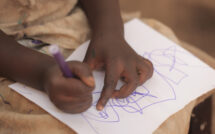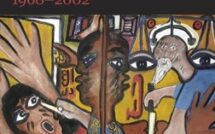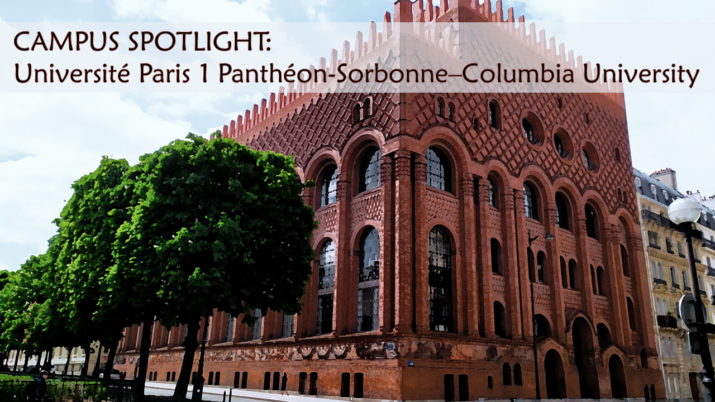
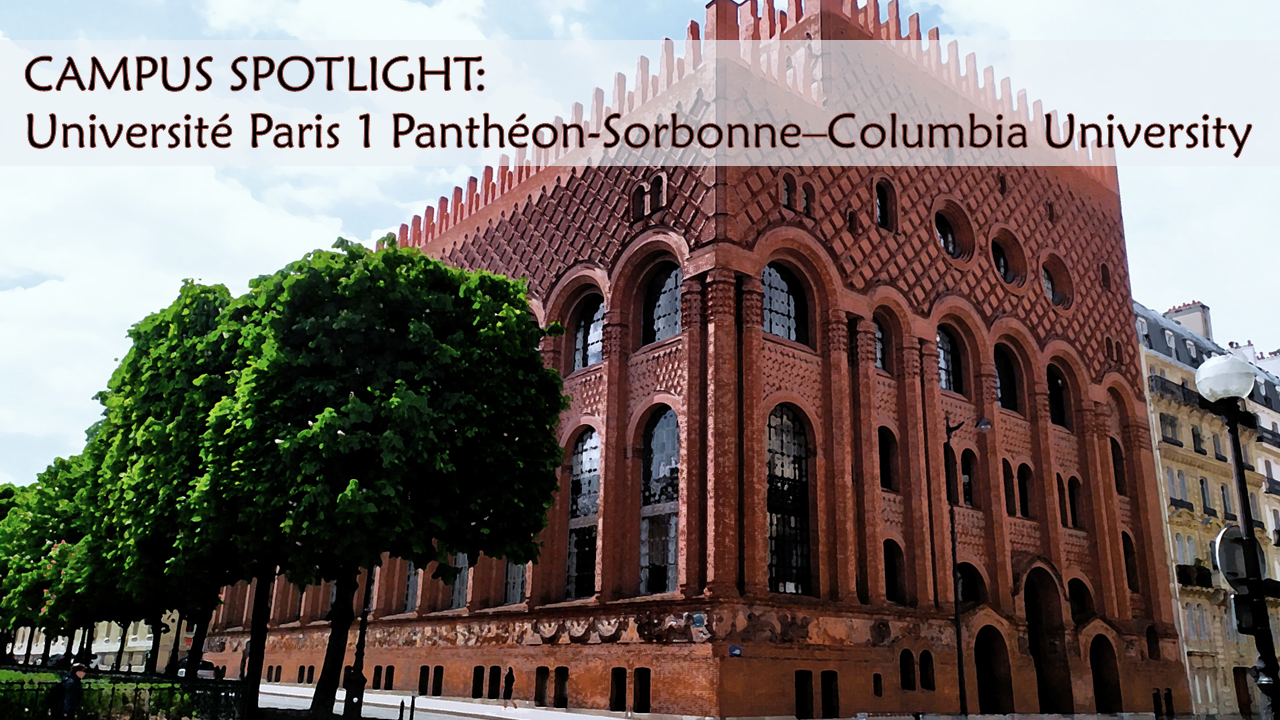
An introduction to our campus spotlight on Université Paris 1 Panthéon-Sorbonne, with Columbia University.
Archaeological treasures from the Institut d’art et d’archéologie in Paris
In two previous issues of EuropeNow, we reported on an exciting joint research and teaching project between Columbia University and the University Paris 1 Pantheon-Sorbonne, “Transatlantic Adventures: Parallel heritages, Humanities in action!,” dedicated to the Sorbonne and Columbia collections of antiquities gathered from the end of the nineteenth century at the Sorbonne in Paris and at Columbia University in New York. Beyond being part of an ongoing task aiming at achieving a complete inventory of these two universities’ collections, the project also compares the origin, development, and present state of their respective archaeological heritage. These collections recount the parallel histories of knowledge and scholarly traditions across two different national and academic settings, thus laying the foundations for a better understanding of the historical connections and divisions between European and American academic and public institutions.
In a previous issue of EuropeNow, we provided a summary overview of the project and its primary goals, highlighting the heritage of both universities. A two-session seminar held in New York and Paris in the spring and the fall of 2019 provided faculty members and graduate students from each university the opportunity to present to each other their respective university’s collections and current research. The two-part seminar provided a forum for interdisciplinary exchange and first-hand exploration of the collections in question. In a later issue of the journal, we then offered a series of papers dedicated to Columbia’s collections as part of a Campus spotlight, presenting the results of the research conducted in New York by Columbia doctoral students. We now present another series of studies by Paris students and scholars focusing on a few archaeological treasures from the Institut d’art et d’archéologie in Paris, the century-old building hosting the Department of Art history and Archaeology at the University Paris 1 Panthéon-Sorbonne. This Campus Spotlight presents a series of essays by scholars and doctoral students on various collections of the Institut d’art et d’archéologie and on the manifold dimensions of their study and public dissemination. It also includes a syllabus that Alain Duplouy, Alliance visiting Professor, created for his Columbia seminar on interpretive archaeology.
The university’s collections of archaeology
The gradual introduction of archaeology and art history courses at the Sorbonne from the late nineteenth century on went hand in hand with the creation of reference collections, regarded as an essential tool for teaching and research. Following the model of the Lehrapparat defined in Berlin by Eduard Gerhard (Schnapp 2004), the first professors teaching those subjects sought to acquire a comprehensive pedagogical and scientific apparatus, which Alain Duplouy addresses in his article on the creation of the Institut d’art et d’archéologie. As everywhere else in Europe, however, university collections in France came to be disregarded after WW2. A general lack of funds and qualified personnel, as well as the evolution of teaching methods and content, rendered the collections previously gathered with great care useless, leading to their neglect and sometimes irremediable losses. In Paris, the trend was amplified by the wide-ranging consequences of the May 1968 movement, with implications for the management of university property, whether buildings or collections. Most of the archaeological treasures of the Institut d’art et d’archéologie thereupon fell into oblivion during the following decades. A new generation of scholars, however, is currently reversing this trend. As they have rediscovered the university’s heritage, these scholars have made it the new focus of their research, involving students in the study and restoration of these collections simultaneously.
Many of the archaeology collections that the University Paris 1 Panthéon-Sorbonne now manages—often in cooperation with the Sorbonne University, the other successor of the former University of Paris—have their roots in the historical collections gathered in the Sorbonne and transferred and enriched in the early 1930s at the Institut d’art et d’archéologie. We can mention in particular a Greek antiquities collection (fig. 1) (Duplouy & Asselineau 2016; Duplouy and Bruschini-Chaumet 2019), the remains of a plaster casts collection (about a hundred pieces that were not sent to Versailles in 1973, on which see Martinez 2009), a gilded bronze model of the ancient city of Rome[1] (fig. 2) (Arvanitis 2021), or a large collection of glass plates for projection (Duplouy 2021). Other reference collections were constituted more recently, often as a result of individual initiatives by various professors, acquisition opportunities, and research projects; this is the case for the collection of ancient Iranian seals impressions covered by Guido Antinori as part of this spotlight. The history of these collections is in fact unique, and the ways in which the items that make up each collection were acquired are very diverse, reflecting the institutional and sometimes personal relationships of their initiators. In order to tell the history of each collection, it is often necessary to carry out a piece-by-piece analysis, tracing the thread of archival documents and the indications present on the artefacts themselves, while delving into the biography of the scholars who created these documents.
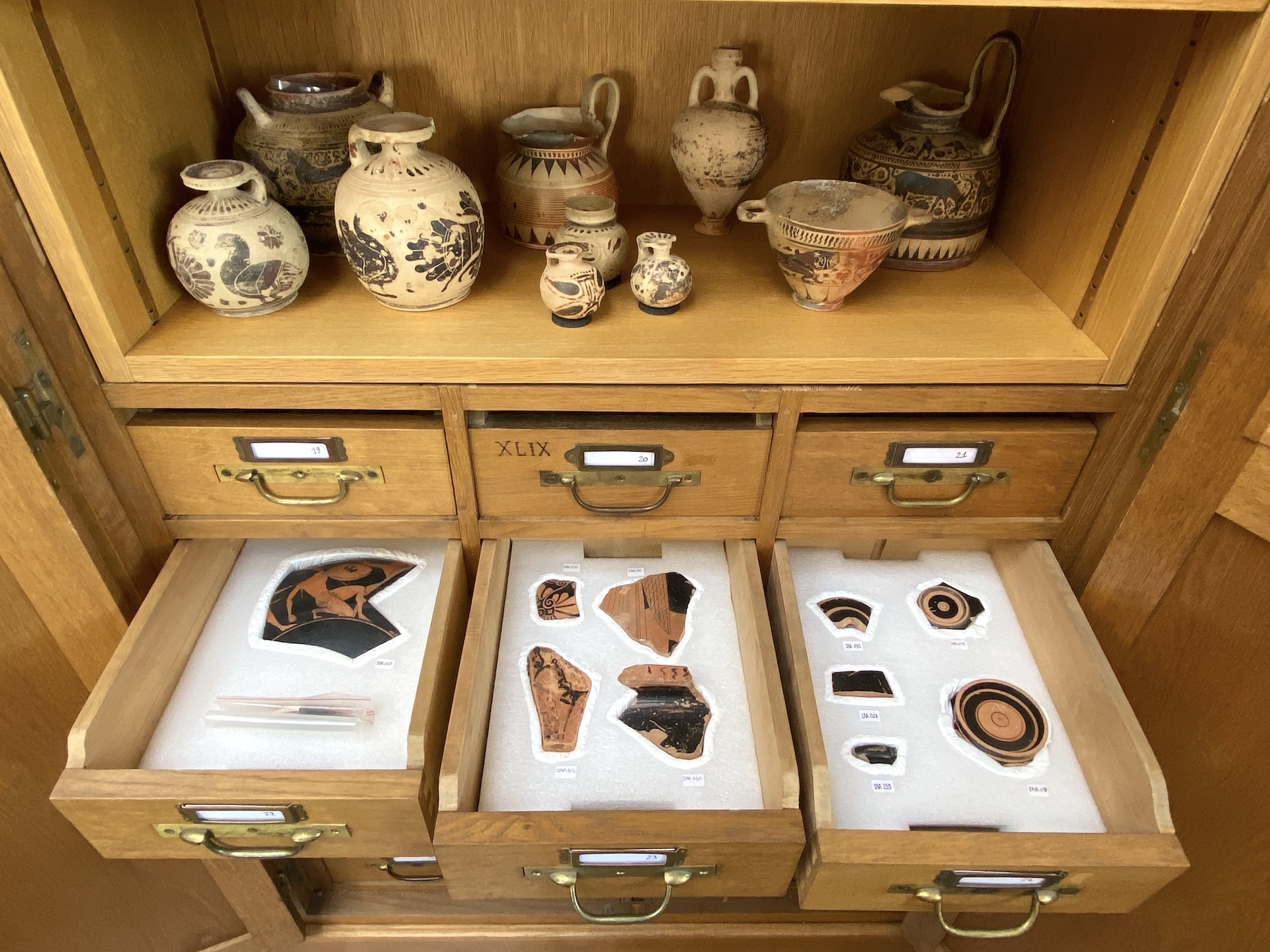

Through the material history of the Sorbonne’s heritage collections, it is also the intangible history of the university and the scientific and pedagogical practices of the discipline of archaeology that can be traced. For example, the collection of glass plates and slides can shed light on the content of past teaching, allowing us to gauge the innovative or conservative character of this teaching. The Paris collection of plaster casts of ancient sculptures reveals the scientific work of Charles Picard as written in his Manuel d’archéologie grecque, which focused on a history of Greek sculpture (1935-1966). The collection of Near Eastern seal-cylinder impressions plunges us into the heart of the scientific project of Henri Seyrig, Jean-Claude Gardin, and Jean Deshayes and allows us to trace the beginnings of computerized data processing in archaeology, as Mariana Silva Porto and Mathilde Castéran demonstrate in their article on Jean Deshayes and the Cylinder Seal Project. Several of these collections are slowly being reintegrated into an active teaching of archaeology. Others still constitute hidden treasures, whose existence is unknown to students and sometimes even to more seasoned scholars. However, all of these collections deserve to be rediscovered, inventoried, protected, and restored, as they form a university heritage and tell a slice of a collective history.
All these tasks have been facilitated thanks to a newly established media center in the department of archaeology (Pôle images et technologies numériques) at Paris 1 Panthéon-Sorbonne, which pursues among its missions the safeguarding and the study of the department’s heritage collections, as well as their digital disclosure. In this spotlight, Vincenzo Capozzoli engages in the creation and the development of the VERGILIUS portal[2] and the way in which it aims at turning the heritage collections of the department into a digital archive, that offers both a collaborative work platform for students and researchers and a virtual museum targeting the university community and the general public.
Campus Spotlight: Université Paris 1 Panthéon-Sorbonne, with Columbia University
-
“From the Sorbonne to the Institut d’Art et d’Archéologie” by Alain Duplouy
-
“The Cylinder Seal Project: Unveiling the Role of Jean Deshayes in French Mecanography” by Mariana Silva Porto and Mathilde Castéran
-
“A Collection of Ancient Iranian Seal Impressions at the Institut d’Art et d’Archéologie” by Guido Antinori
-
“Digital Management of the Archaeological Collections: The VERGILIUS Portal” by Vincenzo Capozzoli
-
“Syllabus: Interpretive Archaeology: Historiography of the Ancient World” by Alain Duplouy
Holger A. Klein is the Lisa and Bernard Selz Professor of Medieval Art History at Columbia University. He was educated at the universities of Freiburg im Breisgau, Munich, London, and Bonn. His research focuses on Late Antique, Early Medieval, and Byzantine art and architecture, the cult of relics, history of collecting, and issues of cultural and artistic exchange.
Alain Duplouy is Reader in Greek archaeology at the University Paris 1 Pantheon-Sorbonne. He was Alliance Visiting Professor in Greek archaeology at Columbia University during the winter-spring semester in 2022. He has led archaeological fieldwork programs in Greece (Itanos) and Italy (Laos and Pietragalla) and has published extensively on elites and citizenship in archaic Greece, as well as on university heritage.
References
Arvanitis, Nikolaos. 2021. “Mapping Ancient Rome and Teaching 3D Technologies: Paul Bigot’s Bronze Model at the Institut d’art et d’archéologie in Paris.” In Stefan Feuser, Stephanie Merten and Katharina Wesselmann (eds.), Teaching Classics in the Digital Age. Kiel University Publishing, Kiel, 145–153, https://doi.org/10.38072/2703-0784/p28.
Duplouy, Alain and Asselineau, Audren. 2016. “La collection d’antiquités grecques de l’Institut d’art et d’archéologie de Paris. 1. La céramique.” Journal des Savants, 85–137, https://doi.org/10.3406/jds.2016.6342.
Duplouy, Alain and Bruschini-Chaumet, Cannelle. 2019. “La collection d’antiquités grecques de l’Institut d’art et d’archéologie de Paris. 2. Les figurines en terre cuite.” Journal des Savants, 395–436.
Duplouy, Alain. 2021. “La fabrique des archives photographiques. L’Institut d’art et d’archéologie de Paris”, Archéologie et photographie. https://archeophoto.hypotheses.org/657
Martinez, Jean-Luc. 2009. “La gypsothèque du musée du Louvre à Versailles.” Comptes rendus des séances de l’Académie des Inscriptions et Belles-Lettres, 1127–1152.
Schnapp, Alain. 2004. “Eduard Gerhard: Founder of Classical archaeology?” Modernism/Modernity 11, 169–171.
Picard, Charles. 1935-1966. Manuel d’archéologie grecque. La sculpture, 5 vols., Paris.
[1] Some of the 3D models created by C. Galinand (head of Pôle Images et technologies numériques), referring to the different elements that make up the model, can already be viewed on the Department’s Sketchfab account: https://skfb.ly/oMIIt.
[2] https://vergilius.pantheonsorbonne.fr
Published on November 21, 2023.

